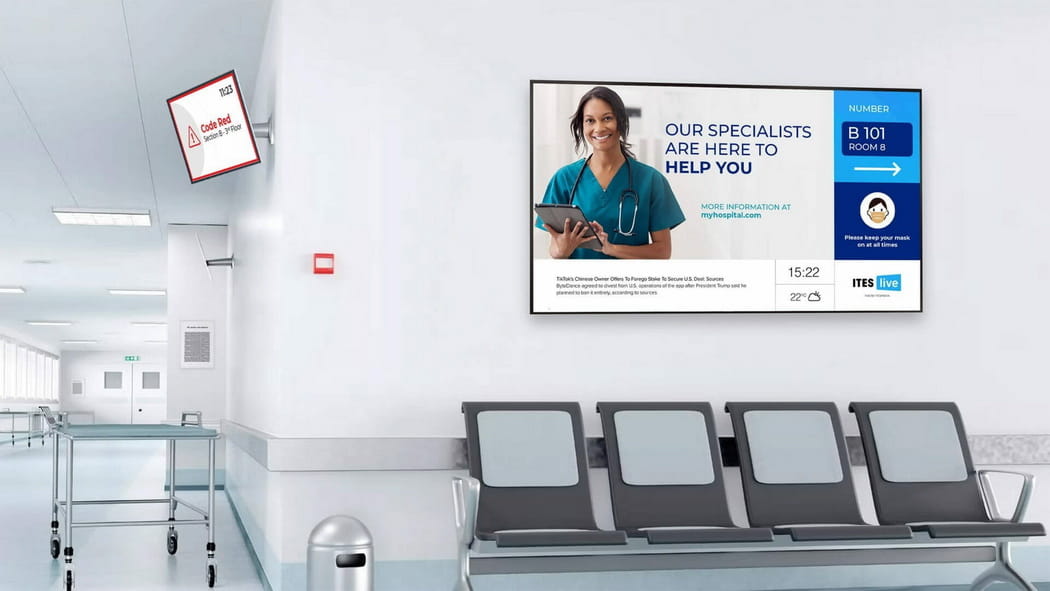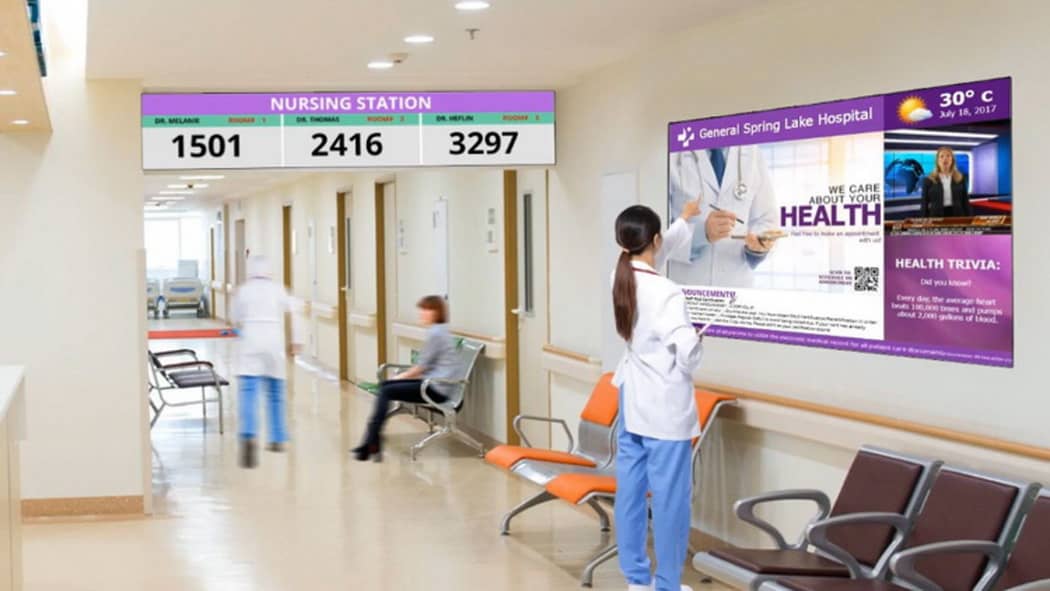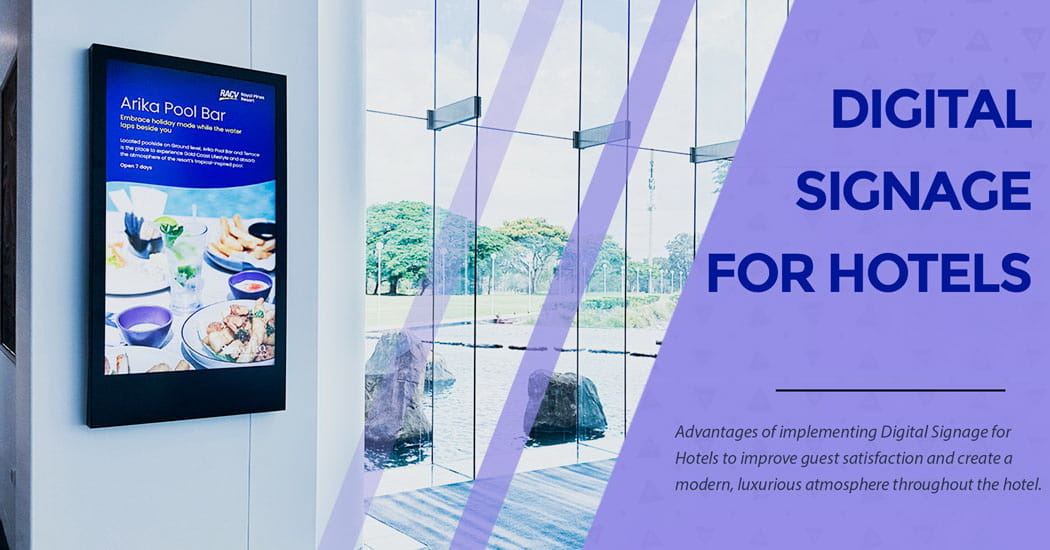
- Post Publish:
- Categories: Industry news
- Updated:
- Posts by Mina Xiao
The Impact of Digital signage in healthcare: Benefits, Advantages and Successes

Mina Xiao
Latest update post:
Table of contents:
With its unique application characteristics, it is changing the hospital’s information dissemination method and improving the quality of medical services.
What is a Digital signage in healthcare?
Digital signage in healthcare has enhanced display capabilities and can be used for advertising, marketing, and communication. A range of displays for video/images, interactive kiosks, and touch screens can be placed in any public space offering scope for customer interaction.
It can update information in real-time and provide the latest medical information and service information, such as doctor schedules, drug information, medical service prices, etc. This real-time update feature enables hospitals to deliver information more quickly and accurately, improving the efficiency of medical services.
For any industry, such as restaurants, healthcare, transportation, etc., Digital signage in healthcare also provide customers with an engaging experience and provide business personnel with all the necessary support to improve the work environment.







Benefits of Digital signage in healthcare
1. Real-time Information Accessibility:
Patients get immediate access to vital information thanks to digital signage displays in hospitals. Patients can simply traverse the complicated hospital environment and keep up with their schedules thanks to navigation maps and appointment reminders, which lessens anxiety and confusion.
2 Personalized Patient Education:
Hospitals may inform patients about their diseases, available treatments, and preventative care alternatives by using customized material on digital signage displays. Access to instructional films and resources enables patients to participate actively in their treatment.
3. Efficient Staff Communication:
Digital signage display serves as an efficient tool for communicating with hospital staff. Messages, announcements, and updates can be disseminated quickly, ensuring that all staff members are informed, reducing communication gaps, and improving overall efficiency.

4. Emergency Alerts and Notifications:
During emergencies, such as fires or lockdowns, digital signage displays can deliver instant alerts and instructions to both staff and patients, helping to maintain safety and order within the hospital premises.
5. Reduced Wait Times:
Digital signage in healthcare can display real-time information about appointment delays, enabling patients to make informed decisions about their time. This helps hospitals manage patient flow more effectively, minimizing wait times.
6. Queue Management:
Hospitals can use digital signage displays to implement queue management systems. Patients can check-in digitally, receive a queue number, and track their position in the queue, reducing congestion in waiting areas.

7. Paperless Environment:
Digital signage displays reduce the need for printed materials like brochures, pamphlets, and posters. This not only saves on printing costs but also contributes to a more eco-friendly and sustainable healthcare environment.
8. Energy Efficiency:
Modern digital signage solutions are energy-efficient and can be programmed to power down during non-operational hours. This leads to significant energy savings for hospitals in the long run.
9. Accurate Information Dissemination:
With digital signage displays, hospitals can swiftly update information across all screens, reducing the risk of outdated or incorrect information being displayed to patients, visitors, and staff.

10. Marketing and Branding:
Digital signage displays can be used to promote hospital services, departments, and specialties. Hospitals can showcase their expertise, innovations, and achievements, helping to build trust and attract patients.
11. Community Engagement:
Hospitals can use digital signage displays to engage with the community by displaying health awareness campaigns, wellness tips, and local healthcare initiatives, thereby fostering a sense of community well-being.
Conclusion
The adoption of digital signage displays in hospitals is reshaping the healthcare landscape by enhancing the patient experience, improving communication, streamlining operations, reducing costs, ensuring compliance, and promoting hospital services. As technology continues to evolve, we can expect digital signage displays to play an even more significant role in revolutionizing healthcare, ultimately leading to better patient outcomes and satisfaction.
It’s clear that digital signage display is not just a trend but an essential tool for modern hospitals striving to provide high-quality care in a dynamic and ever-changing healthcare environment.
The many different uses of digital signage display allow a business to accomplish a variety of goals. Some of the most common applications include Public information – news, weather, traffic, and local (location-specific) information, such as building directories with a map, fire exits, and traveler information.












